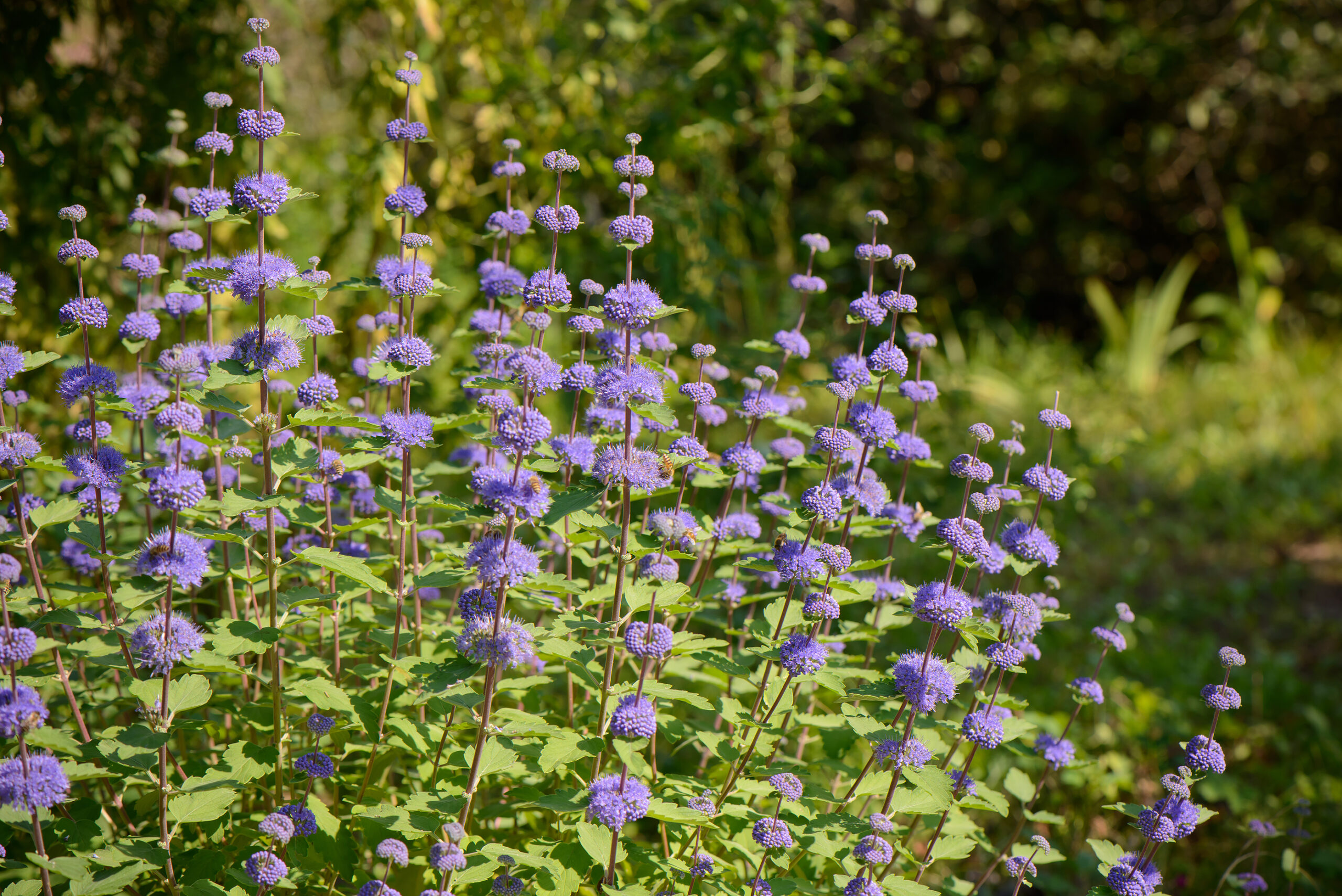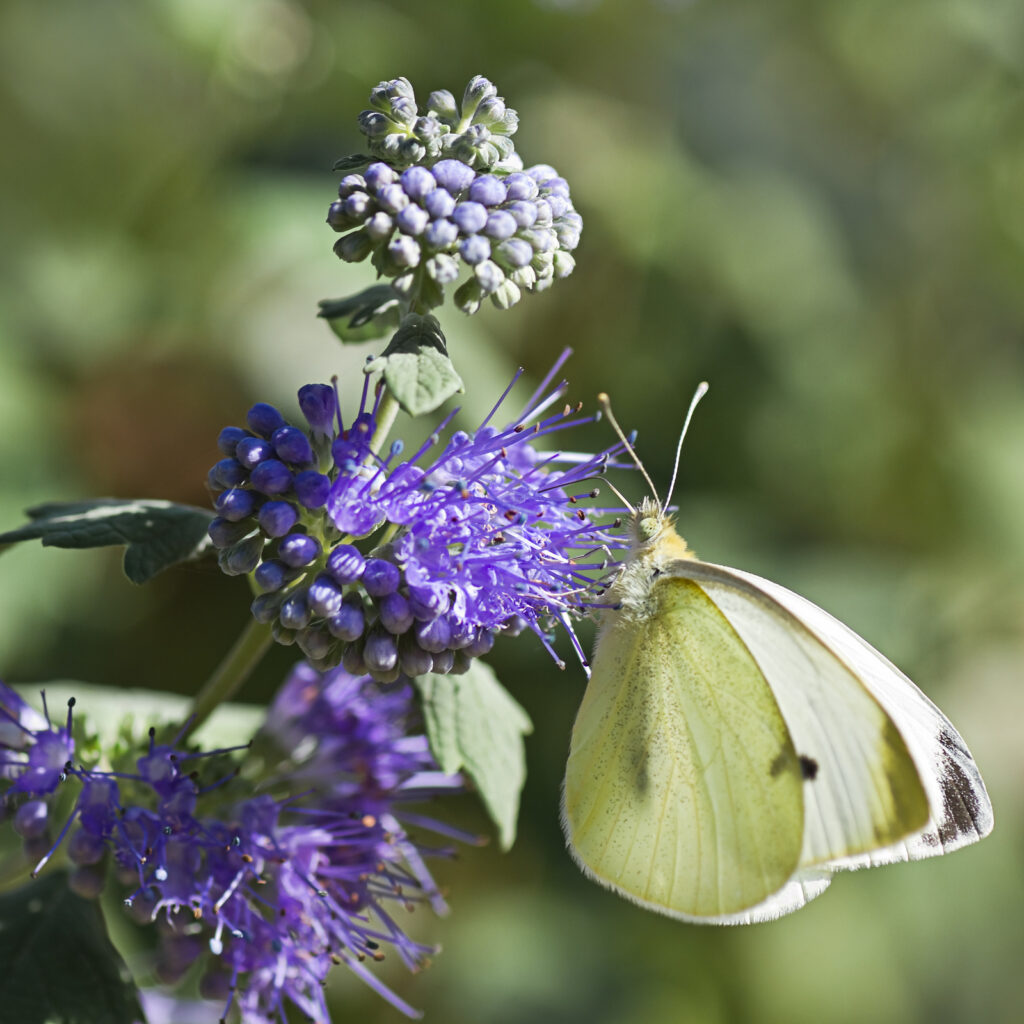Caryopteris — commonly known as bluebeard or blue spirea — is a small deciduous shrub often treated as a perennial. It’s grown for its frothy, rounded flower clusters that appear in mid-summer.
The flowers appear against handsome, gray-green, fine-textured foliage that emits a pleasant eucalyptus-like fragrance with rubbed. Flowers are borne on the current year’s shoots. Often the plant dies back to the ground in winter.
Caryopteris is ideal for a mixed or shrub border. It can be grown as a small annual hedge.
There are six members of the Caryopteris species; all are aromatic deciduous shrubs or perennials.

Get to know Caryopteris
- Plant type: Deciduous shrub.
- Growing zones and range: Zones 6 to 9
- Hardiness: Caryopteris is root hardy to Zone 4.
- Height and width: 3 feet (1m) tall.
- Foliage: Compact shrub, aromatic foliage; entire to toothed leaves are opposite.
- Flowers: Blue flowers borne in terminal or axillary panicles.
- Bloom time: Late summer and early fall.
- Uses: Good choice for beds and mixed borders; good in butterfly garden or as low hedge.
- Garden companions: Curry plant (Helichrysum italicum subsp. serotinum)
- Common name: Blue spirea, bluebeard
- Botanical name: Caryopteris
- Family name: Verbenaceae
- Origin: Himalayas and mountains of Eastern Asia
Where to plant Caryopteris
- Plant Caryopteris in sun or light shade.
- Plant Camassia in light, well-drained, moderately fertile soil.
When to plant Caryopteris
- Set container-grown Caryopteris in the garden in spring or autumn.
- Sow seeds in the garden in spring.

Planting and spacing Caryopteris
- Space Caryopteris 3 to 5 feet (1-1.5m) apart.
- Sow seed 1/8 inch deep in evenly prepared soil.in evenly prepared soil.
How to water and feed Caryopteris
- Keep the soil evenly moist.
- Established plant tolerate dry conditions, but benefit if watered during drought.
- Feed Caryopertis with an all-purpose, organic fertilizer in spring.
How to care for Caryopteris
- Caryopteris does freeze back in winter, cut it nearly to the ground in spring.
- Cut back growth after each wave of bloom to encourage more flowers.
Caryopteris pests and diseases
- Caryopteris has few disease problems.
- Caryopteris can develop tarnished plant bugs.

Caryopteris propagation
- Sow seed in autumn in containers in cold frame.
- Take softwood cuttings of Caryopteris in late spring.
- Dig clumps in spring or fall and replant after division.
Caryopteris varieties to grow
- Caryopteris clandonensis, blue mist: Low-growing mound to 24 inches tall; clusters of small blue flowers top upper parts of stems; cultivars include ‘Blue Mist’, with light blue flowers; ‘Dark Knight’, with dark blooms and silvery foliage; ‘Worcester Gold’, with purple-blue flowers and yellow foliage.
- C. incana, common bluebird: taller than C. clandonensis with more open growth to 4 feet tall; lavender blue flowrs.















